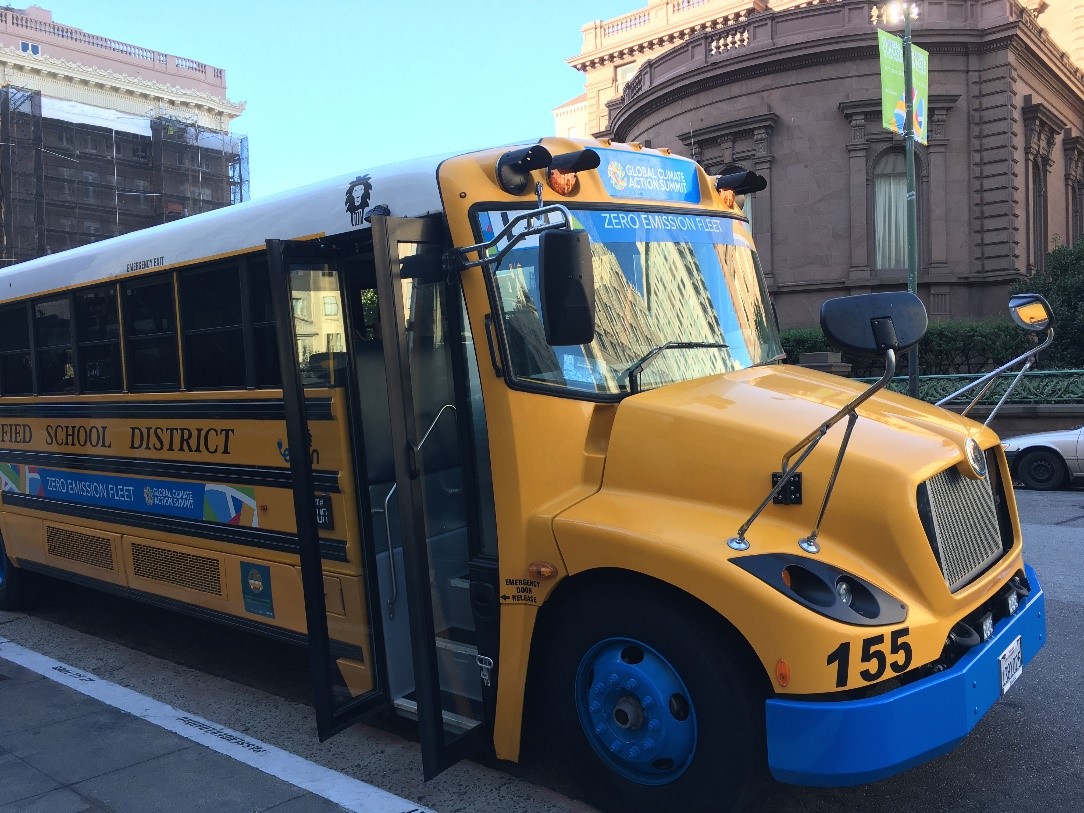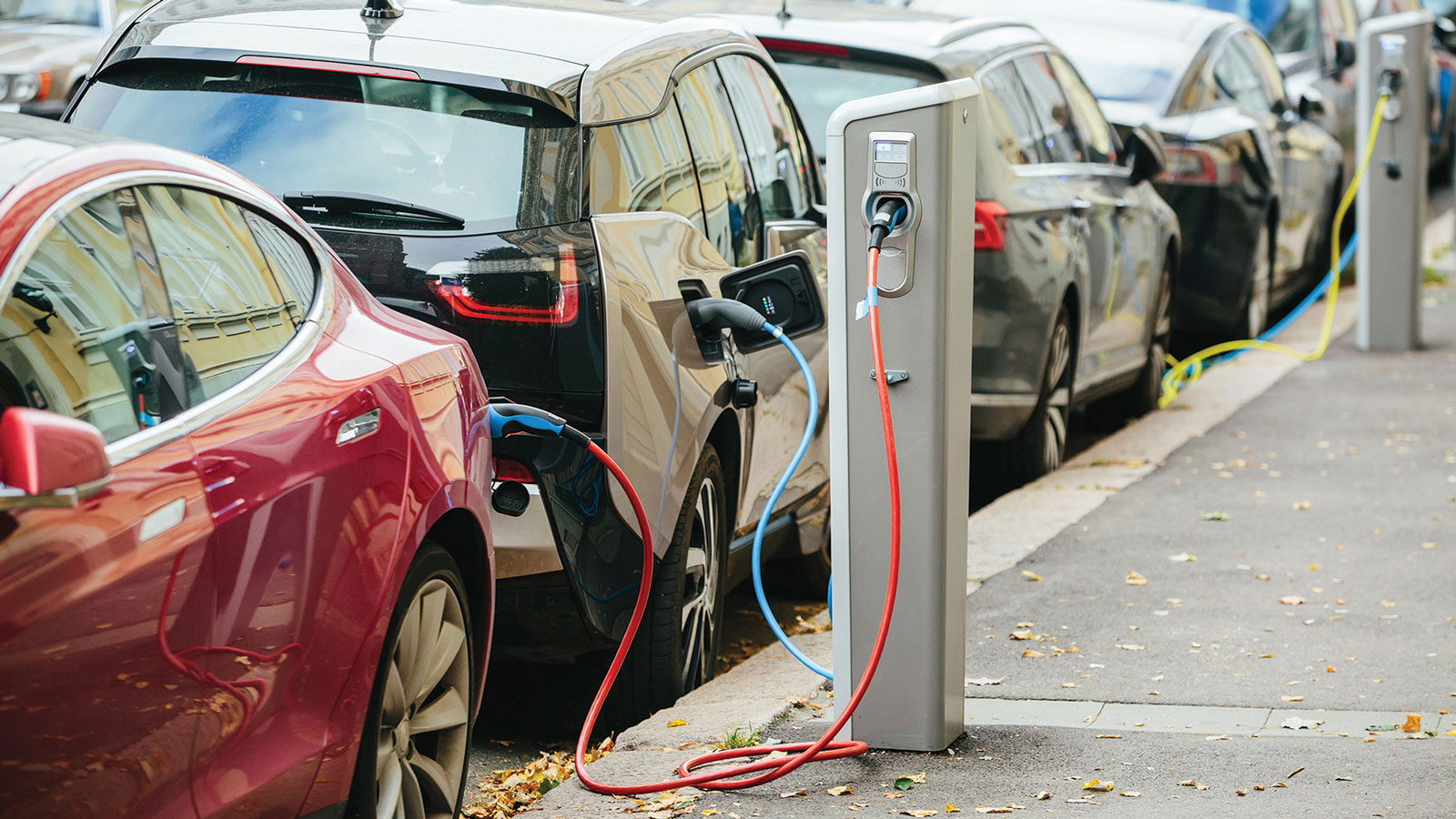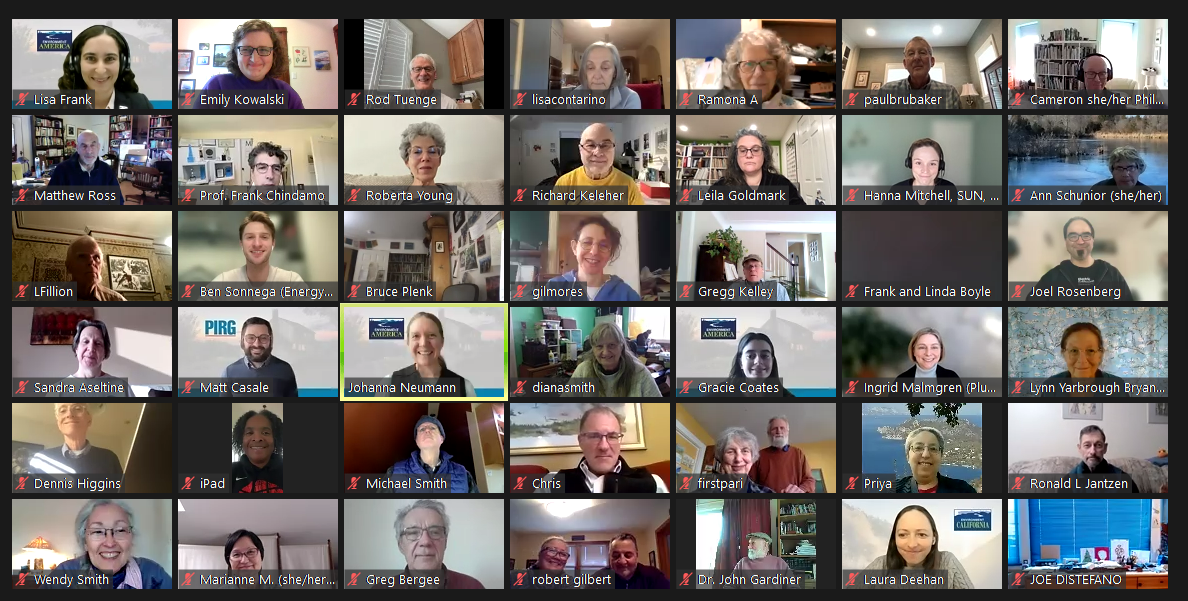
Back to school on an electric bus
Just a few years ago, electric school buses were practically unheard of. Today, more than five million students across America attend school in a district with electric buses on the road - and that number is growing fast.

It’s August, which means that millions of American students will soon be waiting on roadsides for the familiar yellow bus to carry them to school.
For many of those students, however, there will be something new and different about their trip to school: it will be on an electric bus.
Five and a half million students across the country now attend school in districts that have electric school buses (ESBs) on the road, and more than 10 million attend school in districts that have made a commitment to ESBs (that is, districts that have received funding for, ordered, taken delivery of, or are already operating ESBs).
That is a huge change. Just a few years ago, electric school buses were practically unheard of. But in the last year alone, the number of commitments to purchase ESBs has more than tripled.
For students who are lucky enough to ride them, that will mean less exposure to diesel pollution that puts their health and the health of our communities at risk. And the rise of ESBs brings other benefits as well; they can even be used as backup power sources and help prop up the electric grid during periods of high energy demand.
Let’s look at where some of those new buses will be hitting the streets.
Electric school buses in America, 2023
New data published by the World Resources Institute (WRI) shows the rapid growth of electric school bus adoption across the country.
At the time of Frontier Group’s last report on electric school buses, back at the start of 2022, there were around 1,828 electric school buses committed across the country. That figure has now leapt up to 5,986 – more than three times the number of commitments made just 18 months ago. These commitments now span 909 school districts and private fleet operators across all 50 states plus five tribal nations and territories.
Some of the leaders in ESB adoption are the states you would expect. California, for example, currently has 661 electric school buses delivered or in operation, and 2,046 committed – by far the largest number of commitments of any state, amounting to just over 10% of California’s total school bus fleet. Twin Rivers Unified School District in Sacramento – long established as a leader in electric school bus adoption – has the largest number of electric school buses on the roads of any individual school district in the country, with 56 already in service, out of a total of 84 commitments. Los Angeles Unified School District, meanwhile, has the second highest number of commitments in the country, with a total of 253 – including 11 already on the road.
Maryland has emerged as another leader, with 116 ESBs delivered or operating, and 391 committed – 5.4% of the state’s total school bus fleet. Much of that total is thanks to Montgomery County Public Schools, which has the largest number of school bus commitments of any school district in the country, with 336 vehicles awarded, ordered, delivered or operating.
But ESB adoption has also increased in other parts of the country less well-known for innovation in electric transportation. In the southeast, Louisiana and Arkansas are among the 11 new states that have made commitments since September 2022. Louisiana has gone from zero to 111 committed ESBs, and Arkansas from zero to 11; Mississippi now has 105 and Alabama 31. Georgia – which currently has just one electric school bus on its roads – has 128 on the way.
Increased federal funding has accelerated electric school bus adoption
Several factors are driving these trends, including advancements in ESB technology, the growing number of models on the market, the overwhelmingly positive experiences of early adopters and – it’s reasonable to assume – an increasing recognition of the importance of electrifying school transportation in protecting the health of students and the environment.
But the other factor that’s played a major role is the increased availability of funding to help cover the relatively high upfront cost of electric school buses and the infrastructure needed to operate them – and in particular, rebates or grants from state or federal governments, which have funded the majority of committed ESBs.
WRI identifies almost 100 funding sources for electric school bus adoption – by far the largest of which is the EPA’s Clean School Bus Rebate Program. With money made available through the Bipartisan Infrastructure Law, the program provides $5 billion over five years to replace existing school buses with zero-emission and low-emission alternatives, including fully electric ones.
School districts have jumped on that opportunity – so much so that in September 2022, the EPA announced its intention to almost double the funding awarded for clean school buses due to high demand from school districts nationwide that applied for the first round Clean School Bus Rebates. In the first round of funding from the Clean School Bus Program, the agency received roughly 2,000 applications requesting nearly $4 billion for more than 12,000 buses, with submissions from all 50 states plus D.C., four U.S. territories and several tribes.
State funding, too, has played a role. Perhaps unsurprisingly, the biggest upsurge in ESB adoption has been in the states that have invested most heavily in it. For example, California offers an array of funding programs designed to accelerate the transition to electric buses. In fact, according to WRI data, the second largest source of funding for ESBs in the entire country, by some distance, is California’s Hybrid and Zero-Emission Truck and Bus Voucher Incentive Program.
Early experience with electric school buses has shown that these vehicles can be a clean, reliable, cost-effective alternative to their diesel-powered predecessors, delivering health and environmental benefits to our communities. Thanks to advances in ESB technology and general federal and state incentives, more students will get to enjoy a pollution-free ride to school – this year and in the years to come.
Topics
Authors
James Horrox
Policy Analyst, Frontier Group
James Horrox is a policy analyst at Frontier Group, based in Los Angeles. He holds a BA and PhD in politics and has taught at Manchester University, the University of Salford and the Open University in his native UK. He has worked as a freelance academic editor for more than a decade, and before joining Frontier Group in 2019 he spent two years as a prospect researcher in the Public Interest Network's LA office. His writing has been published in various media outlets, books, journals and reference works.
Find Out More

Environment North Carolina’s 2024 Program Agenda

How to get to 100% clean energy with today’s technologies

Considering buying a used EV? Here are five things to know.

